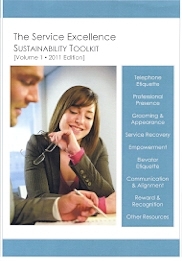And, the quickest way to ensure high labor turnover within your department as soon as the job market improves is to demonstrate the characteristics of a BAD BOSS.
- Bad Bosses Have No Clear Goals. If your team has no clue of the goals or expectations they should be working towards, this may be a weak area for you. In such cases, that there are either no goals at all; the goals are unrealistic; or they are unclear to the team. This leads your team to believe that either their boss doesn’t know what they are doing, doesn’t care, or doesn’t want them to be in the loop.
- Bad Bosses Deliver Poor or No Communication. These are the silent types, who revel in their team not knowing what they are thinking. Bad Bosses don’t feel it necessary to communicate how the company is doing, nor how employees are performing in their jobs. They just don’t communicate, and rarely show any emotion – good or bad.
- Bad Bosses Hold No One Accountable. When there is no communication of team standards or goals, Bad Bosses really can’t hold anyone accountable for excellence or even mediocre job performance. Bad Bosses are apt turn a blind eye, allowing rampant compromise throughout the workplace – and in spite of their lack of accountability, they are not approachable and some employees even fear them.
- Bad Bosses Often Blames Others. When things don’t go as they planned or expected, Bad Bosses are quick to point fingers at everyone except themselves – especially when their team doesn’t perform up to par. While self-accountability is out of the question, Bad Bosses find it easy to blame inefficient work systems, processes, and staff members (all within their sphere of control) for their inability to meet company-wide goals and performance standards.
- Bad Bosses Have No Strategy for Improvement or Team Success. Stubbornly believing that strategizing is a waste of time, they just don’t bother with it. Bad Bosses have a false belief that they are doing fine as is; and because often the powers that be (senior leaders and board members) don’t hold them accountable for positive change, things remain in a constant state of confusion for both customers and employees.
- Bad Bosses Never Delegate. To mask their fear of employee empowerment, Bad Bosses fail to properly train and delegate challenging tasks to their team members. They are cynical when it comes to their team, and don’t feel that anyone has the intellect or capacity to perform their job satisfactorily. Therefore, the team remains stagnant and virtually paralyzed in the absence of leadership.
- Bad Bosses Don’t Mentor Others. To them training, development of staff, and mentoring is also a waste of time. They often say, “No one ever mentored or developed me and I turned out alright.” Bad Bosses have no concept of how to synergistically collaborate with their team to help them grow and excel in their jobs. Unfortunately, Bad Bosses practice “tough love” when it comes to on-the-job training.
If this information has helped you surfaced some of your blind spots, now is a good time to make a change in order to increase your effectiveness as a leader. And for more information on how to enhance your effectiveness as a leader, check out our popular book "The Leadership Book of Numbers, Volume 1"





